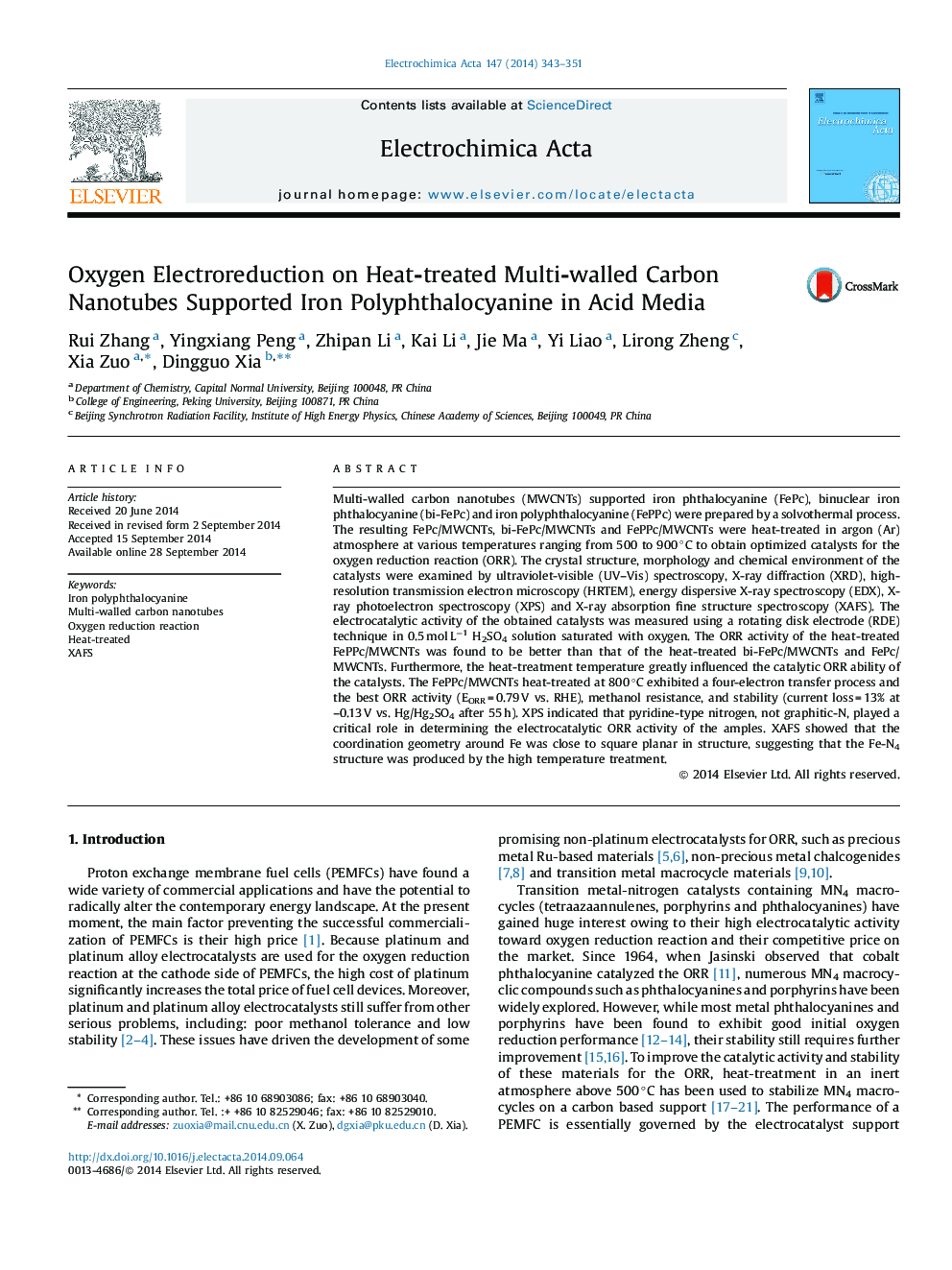| Article ID | Journal | Published Year | Pages | File Type |
|---|---|---|---|---|
| 185071 | Electrochimica Acta | 2014 | 9 Pages |
Multi-walled carbon nanotubes (MWCNTs) supported iron phthalocyanine (FePc), binuclear iron phthalocyanine (bi-FePc) and iron polyphthalocyanine (FePPc) were prepared by a solvothermal process. The resulting FePc/MWCNTs, bi-FePc/MWCNTs and FePPc/MWCNTs were heat-treated in argon (Ar) atmosphere at various temperatures ranging from 500 to 900 °C to obtain optimized catalysts for the oxygen reduction reaction (ORR). The crystal structure, morphology and chemical environment of the catalysts were examined by ultraviolet-visible (UV–Vis) spectroscopy, X-ray diffraction (XRD), high-resolution transmission electron microscopy (HRTEM), energy dispersive X-ray spectroscopy (EDX), X-ray photoelectron spectroscopy (XPS) and X-ray absorption fine structure spectroscopy (XAFS). The electrocatalytic activity of the obtained catalysts was measured using a rotating disk electrode (RDE) technique in 0.5 mol L−1 H2SO4 solution saturated with oxygen. The ORR activity of the heat-treated FePPc/MWCNTs was found to be better than that of the heat-treated bi-FePc/MWCNTs and FePc/MWCNTs. Furthermore, the heat-treatment temperature greatly influenced the catalytic ORR ability of the catalysts. The FePPc/MWCNTs heat-treated at 800 °C exhibited a four-electron transfer process and the best ORR activity (EORR = 0.79 V vs. RHE), methanol resistance, and stability (current loss = 13% at –0.13 V vs. Hg/Hg2SO4 after 55 h). XPS indicated that pyridine-type nitrogen, not graphitic-N, played a critical role in determining the electrocatalytic ORR activity of the amples. XAFS showed that the coordination geometry around Fe was close to square planar in structure, suggesting that the Fe-N4 structure was produced by the high temperature treatment.
